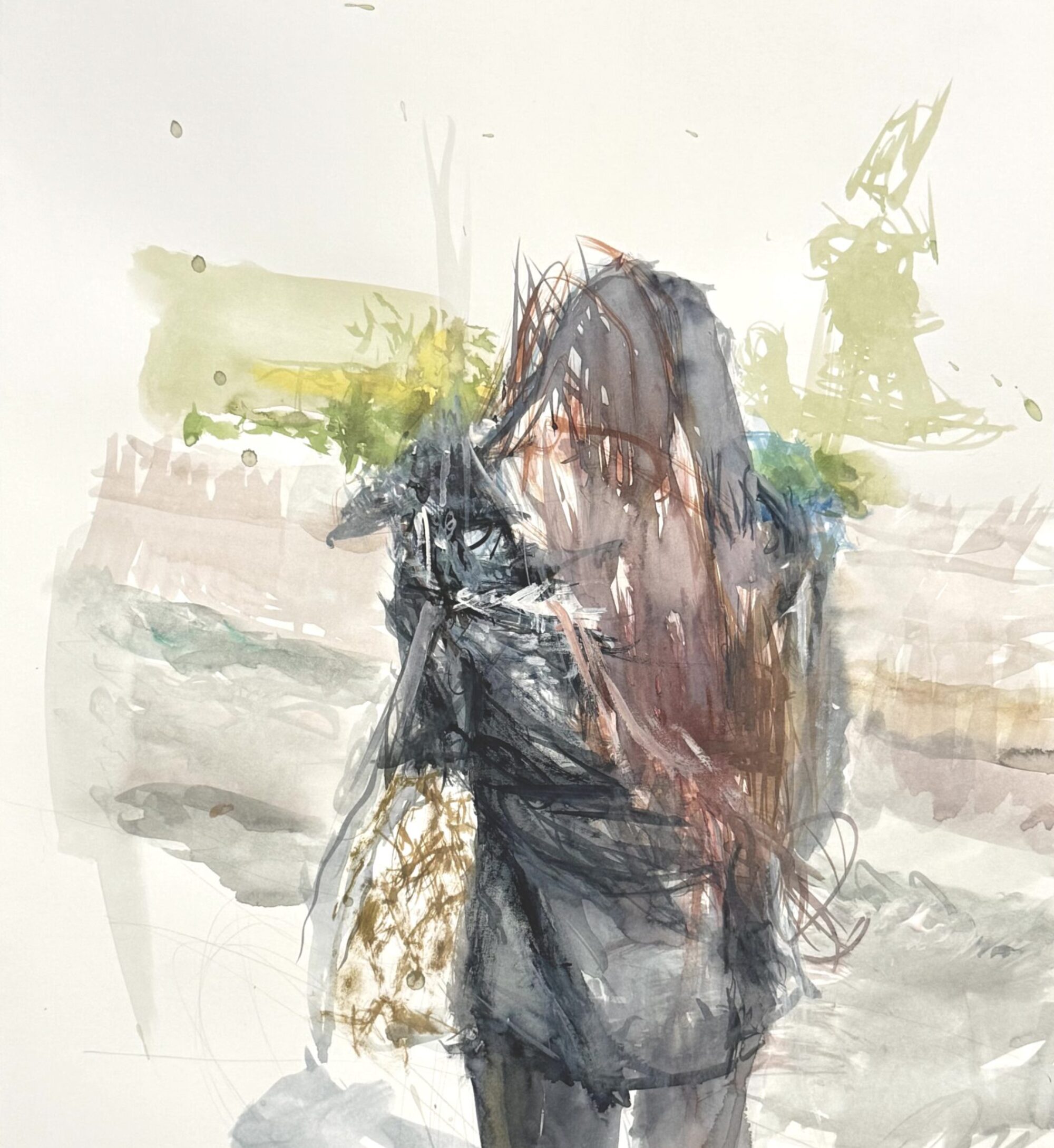Emily Carr by Lewis DeSoto (Penguin Canada, 2009)

By Michael Cox
The Vancouver Art Gallery has more than 200 works by the west coast artist Emily Carr (1871-1945) in their permanent collection, and it is a rare day when they don’t have at least one room displaying her paintings or drawings. She is, arguably, the best known of early twentieth century British Columbia artists. Running concurrently with this summer’s show of Rembrandt, Vermeer and other Dutch Masters, is the third-floor exhibit, Two Visions: Emily Carr and Jack Shadbolt (to September 13), which contrasts the two local artist’s interpretations of the natural world and First Nations totemic art.
Emily Carr is best known for her iconic paintings of dark forests inhabited by the totem poles and long houses of the first peoples of the Pacific northwest: the Salishan, Nootka, Kwakiutl, Nisga’a, Nuxalk, Heiltsuk, Haida, Tsimshian, and Tlinglit nations whose artistry was once dismissed, in the nineteenth and early twentieth centuries, as vestiges of a “savage” culture. It was not only the famous totem poles these people created, but carvings, bentwood boxes, masks and jewellery: now highly collectible, expensive, and revered world-wide as “Canadian” aboriginal art.
Carr’s interest grew organically from her passionate connection to British Columbia. Even after studying art in San Francisco and Paris, after living in London, she defined herself as a west coast artist, and returned again and again, where she found creative sustenance not in the approval of others, but in the isolated villages along the B.C. coast. It was from physically arduous visits to native settlements that Carr created her most mature, affecting work. Her paintings have become as much a part of the Canadian artistic identity as those of the Group of Seven.
But Carr was only recognized by the artistic community later in her life; as a woman, as a west coast artist, and as an unmarried eccentric, Carr was at a disadvantage in the male-dominated academy. Nevertheless, she persisted in both her painting and writing about her life and life’s work in such well-known books as Klee-Wyck and The Book of Small, neither of which has ever gone out of print.
In Penguin Canada’s new series Extraordinary Canadians, Lewis DeSoto, himself an artist and writer (A Blade of Grass), has crafted a new and accessible biography of Emily Carr.
Like DeSoto, I was, at one time, less interested in Carr’s seemingly impenetrable paintings of the temperate rain forest I thought I knew so well.
For DeSoto, it was a visit to a native village that shook him from his complacency about her shadowy art; for me, rather, it was the very institution which had, earlier, bored me with its seemingly endless Carr retrospectives. In 2002 the VAG put her alongside Georgia O’Keeffe and Frida Kahlo; and in 2006 they curated a show which toured Canada, Emily Carr: New Perspectives on a Canadian Icon (the book is available from the VAG store).
Like DeSoto, I experienced a familiar artist with new insight, and began to appreciate her exceptional talent. She was every bit deserving of the accolades later given the Group of Seven. Had she been painting in Paris, her works would today be hung alongside Cézanne and van Gogh, DeSoto claims.
It was only in 1927, when she was fifty-six, that Emily Carr’s reputation was justly recognized, when the National Gallery of Canada (in Ottawa) had an exhibit of west coast art, both native and modern. Here, Carr not only had some of her work shown (more than any other artist), and was asked to design the cover of the exhibition brochure, but she was introduced to contemporaries A.Y. Jackson and Lawren Harris among others.
It was only then, so late in her artistic life, DeSoto writes, when Emily saw the works of the Group of Seven and could talk with artists who were similarly trying to reinterpret the Canadian landscape that “she was struck by how much their intentions echoed hers. She, too, had been striving to define her experience in relation to a unique, sparsely populated landscape, and to find an original style in which to paint it.”
Few liked the modernist approach of these artists, but they were determined to forge their own styles, and Carr, although outside the group socially and geographically, found solace in the knowledge she was not alone.
DeSoto’s biography is highly engaging if at times simplistic; it reads as if written for a high-school level reader (which, perhaps, is the intent of series editor John Ralston Saul): “Victoria was growing into a small city. Automobiles were appearing among the horse-drawn carriages.”
That said, the plain language makes for a fast read. If all of the biographies in this Penguin series are as digestible as DeSoto’s Emily Carr, we have no excuse for not learning about many of the extraordinary Canadians whose lives have, until now, remained obscure to the average reader, turned off by fusty history classes or too-thorough, six-hundred page biographies.
[Penguin Canada’s Extraordinary Canadians series includes biographies of: Lester B. Pearson; Stephen Leacock; Nellie McClung; René Lévesque; Norman Behtune, Pierre Elliott Trudeau; Marshall McLuhan, L.M.Montgomery and others, twenty subjects in all.]